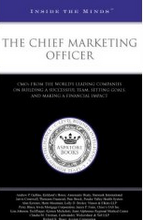
Back when I was CMO of Thomson Financial, a viral video about Google was making the rounds. From the vantage point of the year 2020, the piece spun a fictional history of Google. Sometime around the year 2013 The New York Times was forced to convert to a newsletter “read mostly by the elderly.”
Now a few years later we’re back to the future. On Tuesday night Columbia University’s J-School hosted its 4th Annual Changing Media Landscape discussion. The consensus? Expect the disruptive changes taking place to accelerate, particularly given the economic environment.
Jacob Weisberg, chairman of Slate, cast the die on the relationship between traditional and new media this way:
“New media and the traditional media are diverging rapidly after a period of relatively peaceful coexistence. We are moving into a conflict model.”
Of course the traditional media model has been under siege for several years and Jeff Jarvis and others have warned about the consequences of failing to adapt. And media company share prices have reflected Wall Street’s concern.
But innovation and adaptation take time, which is why they are not management’s first reaction to disruptive change. Cost cuts, however, are tried and true, albeit not actually a fix. Another panelist at the discussion, Erica Smith, is a news designer for the St. Louis Post-Dispatch. She also writes a blog called Paper Cuts that details the jobs cut at newspapers nationally. By Erica’s count, the industry has lost 13,000 jobs so far in 2008 with the coasts particularly hard hit.
Another concern on the lips of most every panelist was trust. Indeed, it wasn’t lost on the panel that a changing media landscape creates what we've termed here in the Reputation Garage as a changing media “trustscape.”
Sewell Chan, blogger/bureau chief of the New York Times’ City Room blog, noted that trust models are different for new vs. old media. In a traditional media you seek audience confidence based on the judgment of editors and by maintaining a high standard of reporting. Trust in such organizations is not high, however, falling in some cases to historic lows along with trust in government and big companies in general.
Content aggregators, such as Tina Brown’s The Daily Beast or The Week, have a different trust model because their role is to sift through reams of news and data to find the golden nuggets. (Professional News Recommender is now a job title, by the way.) Readers need to trust the sifting process, but the jury is out on how to create trust for this model.
Finally, the new media trust model seeks to create an environment where you build on the trust that is already resident in social networks. As we’ve noted in our work here, we are now living in the lowest trust era in a century. Peer-to-peer trust, however, is one of the few bright spots. Digg, Delicio.us and others are very democratic in how they surface content.
Chan believes that with the dawning of mass amateurism in news and reporting across millions of blogs, the lines between the professional and the layman have blurred.
The learning for would-be “trustmeisters” is this: There is lots of good content being created in the new media world, but those core trust issues of verification, fairness and neutrality will never go away. Old media trust practices need to be married with new media democracy. While progress is being made, there remains plenty of opportunity for innovators to find new ways to accomplish this.
Stay tuned.
Copyright 2008 by the Reputation Garage



No comments:
Post a Comment